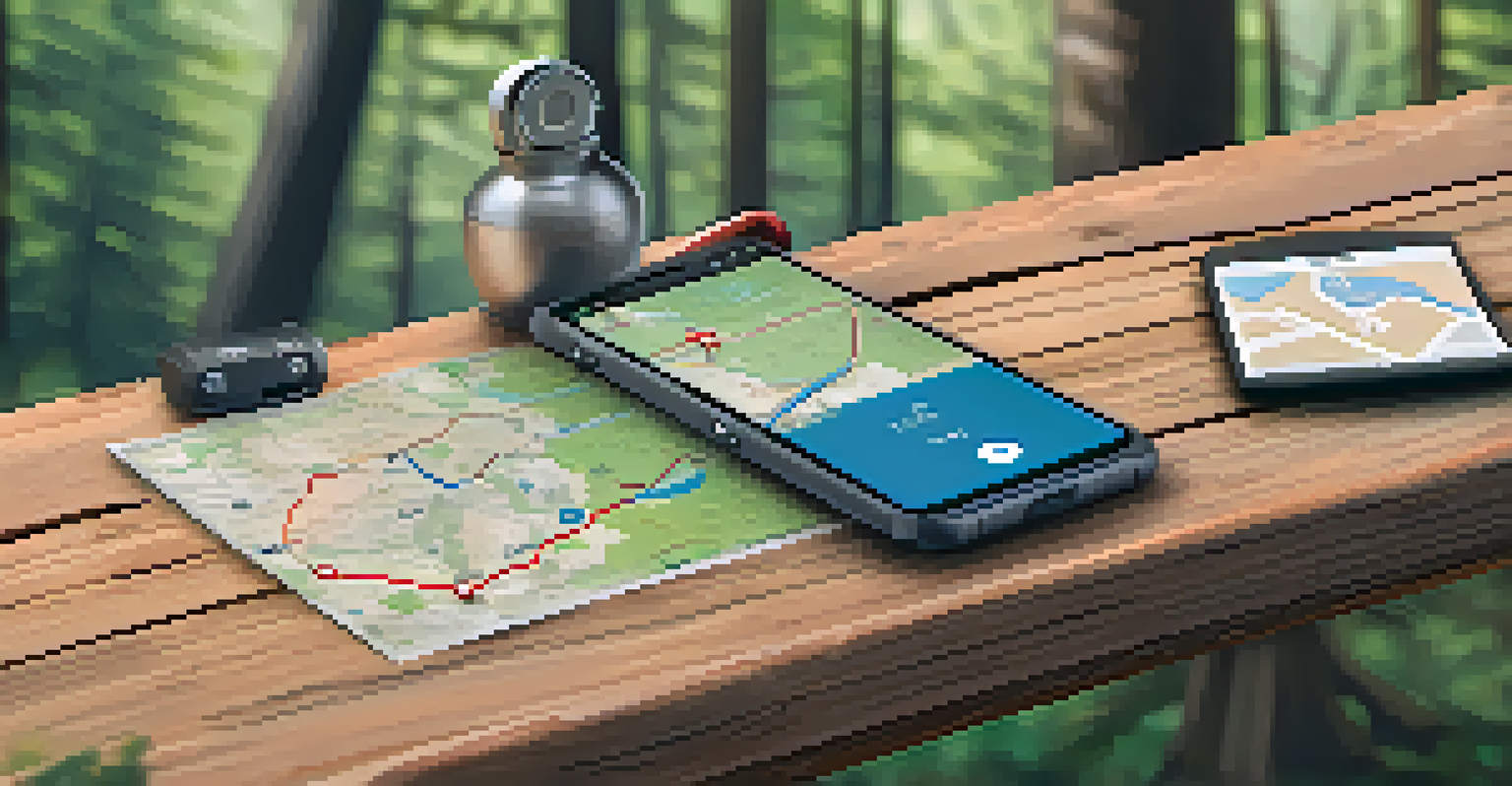The Best Hiking Apps: Technology for Outdoor Navigation

Why Use Hiking Apps for Outdoor Navigation?
In today’s tech-driven world, hiking apps are essential for outdoor navigation. They offer a level of convenience that traditional maps simply can’t match. With just a smartphone in hand, you can access real-time information about trails, weather, and even wildlife sightings.
The mountains are calling and I must go.
These apps help you stay safe by providing GPS tracking, allowing you to share your location with friends or family. Imagine hiking through a dense forest and having the peace of mind that you can find your way back or that someone knows where you are. This feature is especially crucial for solo hikers or those exploring unfamiliar terrain.
Moreover, many hiking apps include user-generated tips and reviews, giving you insights from fellow adventurers. You can learn about hidden gems along the trail, the best times to hike, and even where to find the perfect picnic spot. It’s like having a guidebook that’s constantly updated, right in your pocket.
Top Features to Look for in Hiking Apps
When selecting a hiking app, it’s important to consider key features that enhance your outdoor experience. Offline maps are a must; they allow you to navigate even when you lose cell service, which is common in remote areas. Think of it as a lifeline when technology fails you.

Another valuable feature is route planning and customization. The best apps let you create or modify your own hiking routes based on your skill level and preferences. It’s akin to crafting your own adventure, ensuring you get the most out of your time on the trails.
Hiking Apps Enhance Navigation
Hiking apps provide real-time information, GPS tracking, and user-generated insights to improve outdoor navigation and safety.
Lastly, look for apps that offer community features, such as sharing experiences and challenges. This creates a sense of camaraderie among hikers and can provide motivation, similar to joining a book club where everyone shares their latest reads.
The Best Hiking Apps for Beginners
If you’re new to hiking, certain apps are particularly user-friendly and perfect for beginners. Apps like AllTrails and Komoot provide simple interfaces with clear trail maps and descriptions. They guide you step-by-step, making it easy to follow along as you explore the great outdoors.
In every walk with nature one receives far more than he seeks.
AllTrails, for instance, not only offers a vast database of trails but also user reviews and photos, helping you choose the right hike for your skill level. It’s like having a seasoned hiker as your personal tour guide, ready to help you navigate the trails.
Another excellent choice for beginners is Hiking Project, which includes detailed trail maps and elevation profiles. This information helps you prepare physically and mentally for what lies ahead, ensuring you’re equipped for your hiking journey.
Best Hiking Apps for Advanced Hikers
For seasoned hikers seeking more advanced features, apps like Gaia GPS and ViewRanger stand out. These platforms offer topographic maps and extensive route planning options, catering to those who thrive on challenging terrains and complex trails. It’s like upgrading from a family car to a rugged off-road vehicle.
Gaia GPS is particularly known for its offline capabilities, which are invaluable in remote areas. It allows you to plot intricate routes and discover less-traveled paths, giving you the thrill of exploration like never before.
Key Features for Hiking Apps
Essential features like offline maps, route customization, and community sharing significantly enhance the hiking experience.
ViewRanger, on the other hand, excels in augmented reality features, enabling you to identify peaks and landmarks in real-time. Imagine hiking in a stunning landscape and being able to point your phone at a mountain to learn its name instantly—it adds a layer of excitement to your adventure!
Hiking Apps for Safety and Emergency Situations
Safety should always be a priority when hiking, and certain apps provide essential safety features to keep you secure. Apps like What3words and SARTrack help you pinpoint your exact location, making it easier to communicate with rescue services in case of an emergency. Think of them as your safety net on the trails.
What3words divides the world into a grid of 3m squares and assigns each one a unique three-word address. This system simplifies navigation and location-sharing, ensuring first responders can find you quickly, no matter where you are.
Additionally, some hiking apps offer weather alerts and real-time updates, which can be lifesaving when conditions change unexpectedly. Staying informed about potential storms or changes in temperature can mean the difference between a pleasant hike and a dangerous situation.
Integrating Hiking Apps with Wearable Technology
Incorporating hiking apps with wearable technology can elevate your outdoor experience. Devices like smartwatches and fitness trackers sync seamlessly with apps, allowing you to monitor your progress without constantly checking your phone. It’s like having a personal coach on your wrist, encouraging and guiding you along the way.
Many smartwatches now offer features such as heart rate monitoring, GPS tracking, and even music playback. This means you can enjoy your favorite tunes while keeping tabs on your health metrics, creating a perfect blend of enjoyment and safety.
Safety Tools in Hiking Apps
Apps like What3words and SARTrack offer critical safety features that help hikers communicate their location in emergencies.
Moreover, these devices often provide notifications for calls and messages, helping you stay connected while on the trails. This way, you can share your hiking adventure with friends and family without missing a beat, even in the great outdoors.
The Future of Hiking Apps and Technology
As technology continues to evolve, the future of hiking apps looks incredibly promising. Innovations such as AI-driven navigation and enhanced augmented reality capabilities are on the horizon, potentially transforming how we explore nature. Imagine having an app that learns your preferences and suggests personalized trails based on your hiking history.
Additionally, advancements in satellite technology may provide even more accurate and detailed maps, ensuring that hikers can venture into uncharted territory with confidence. This could open up new possibilities for exploration and adventure, making hiking accessible to even more people.

Ultimately, the integration of technology into hiking not only enhances our experiences but also fosters a deeper connection to nature. As we embrace these advancements, we can look forward to a future where technology and the great outdoors go hand in hand, ensuring safer and more enjoyable adventures for everyone.